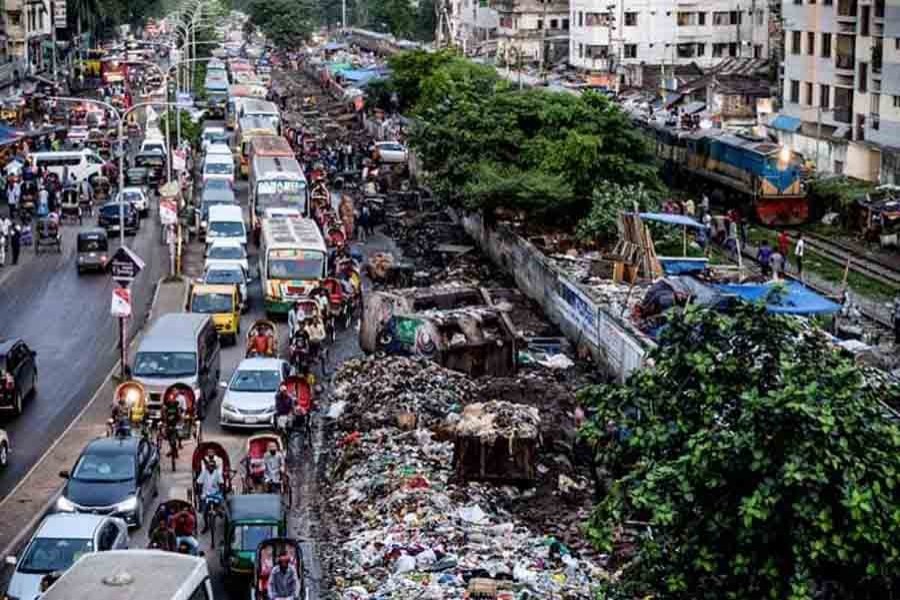Sadly, there has been no improvement in Dhaka's global ranking during the past seven years in terms of liveability. The Bangladeshi metropolis has consistently remained among the worst ten performers in the index prepared by the UK-based The Economist Intelligence Unit (EIU) since 2012. This year, Dhaka's ranking has come down to 139th out of 140 cities covered by the EIU survey. This implies it is only second from the bottom, that too ahead of the war-ravaged Syrian city of Damascus. The position was the same between 2012 and 2015, although the city was ranked 137th or fourth from the bottom during 2016 and 2017.
As in the past, the cities around the world have been ranked by EIU based on five criteria, viz. stability, healthcare, culture & environment, education and infrastructure. Out of maximum 100 rating points, Dhaka could garner a niggardly 38 points on the basis of these criteria. On the other hand, the top performer Vienna got 99.1 points, while the worst Damascus got 30.7 points. Dhaka's points in stability, education, culture & environment, and healthcare were 50, 41.7, and 40.5 respectively. But its rating of 26.8 points in the infrastructure criterion was the worst among all the 140 cities surveyed.
Although not all Bangladeshi experts agree with the EIU assessment, they are almost unanimous in the view that unplanned urbanisation, lack of good governance and unbridled growth of population are mainly at fault for Dhaka's precarious position in terms of liveability. The worst performing infrastructure criterion has been measured on the basis of seven indicators, viz. quality of road network, public transport, energy and water provision, telecommunications and international links as well as housing. These are governance areas where the authorities have miserably failed to improve the situation. Significantly, unsatisfactory infrastructure was identified by EIU as mainly responsible for the lowest scores among cities.
There can be no doubt that the living condition of Dhaka has been deteriorating over the years. Maladies like dearth of public transportation, insufficient housing, weak healthcare and educational facilities, water stagnation, poor drainage, improper sewerage cum waste management etc. are bedevilling the life of city-dwellers on a constant basis. Added to these are lack of smooth supply of electricity, water and gas, shrinking of open spaces for sports and recreation as well as environmental pollution that constantly vitiate the city's air, water and sky. Lack of coordinated and efficient governance system in the metropolis is making the situation worse.
Statistics show that the rate of migration to capital Dhaka is unsustainably high at around 3.0 per cent per annum. This is aggravating the situation by increasing pressure on the transport system, schooling, healthcare and utilities. With almost 36 per cent of the country's urban population living in Greater Dhaka, it has now become one of the most densely populated metropolises in the world. As pointed out by the World Bank, Dhaka's urban development has failed to keep pace with the city's rapid growth, resulting in a messy and uneven urbanisation process. Lack of adequate planning has led to congestion and poor liveability.
All said and done, we cannot evade our responsibility by merely lamenting the precarious state of Dhaka's liveability. Neither should we allow our beloved city to pass into further chaos, stagnation and degeneration in an unremitting manner. Many discussions, studies and researches have been conducted on how Dhaka can be brought back to life and made a beautiful city once again. The devil is in the details, and now is the time to swing into action. Will the authorities wake up?


